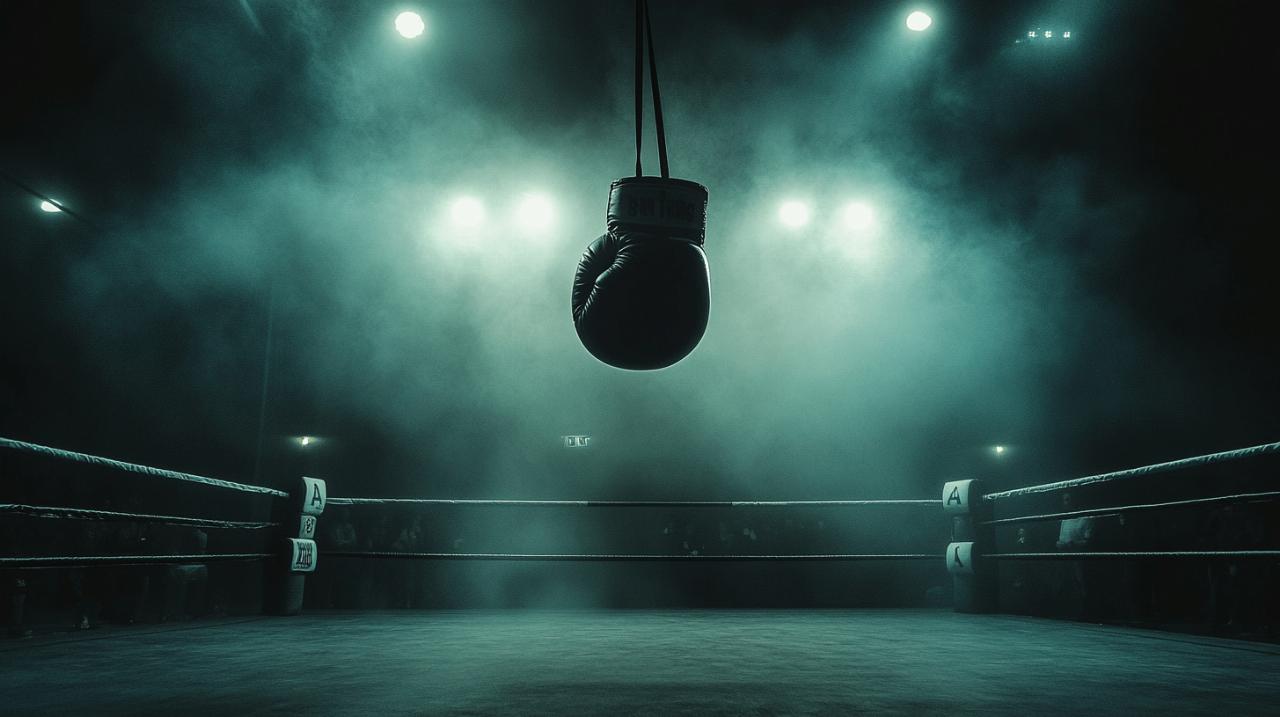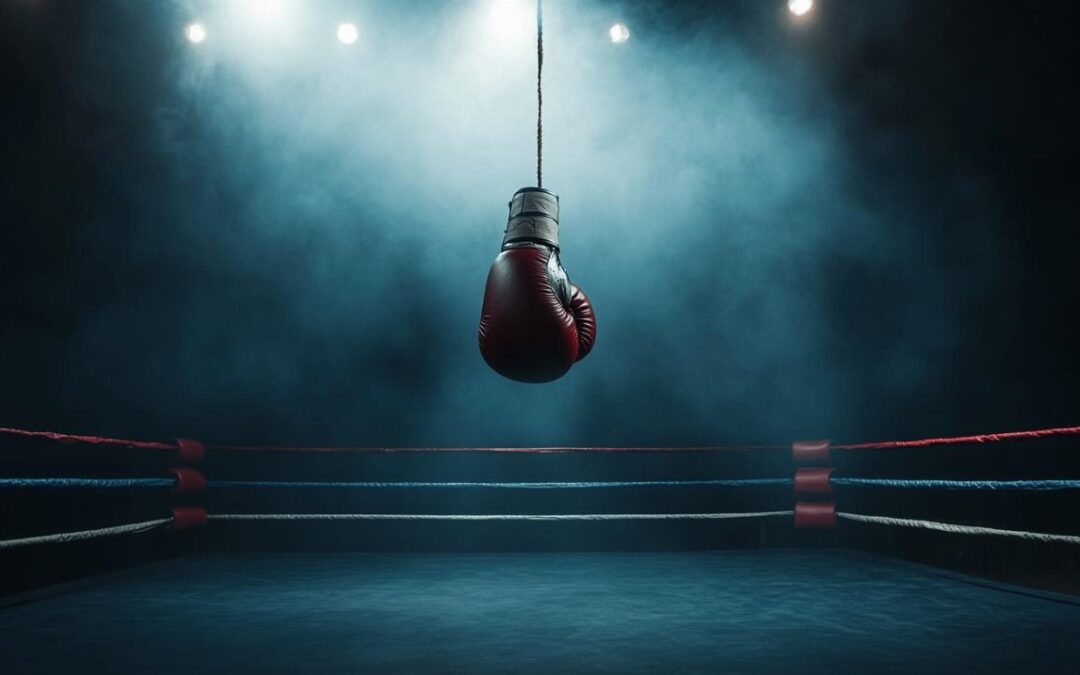The sweet science of boxing, a sport steeped in tradition and admired for its raw athleticism, also carries with it a sobering reality that cannot be ignored. Behind the glory and the roar of the crowd lies a darker side, where the physical demands and inherent brutality of the ring can lead to unimaginable tragedy. The stories of fighters who have paid the ultimate price serve as a stark reminder of the human cost of this pursuit, leaving families shattered and communities in mourning. These accounts are not merely statistics or footnotes in sporting history; they are the narratives of individuals who dared to step into the squared circle, only to have their lives cut short in the most devastating of circumstances.
The Brutal Reality: Ten Tragic Deaths in the Ring
Fatal Blows and Career-Ending Injuries: The Stories of Ten Fallen Boxers
Leavander Johnson was a fighter who epitomised dedication and resilience. In 2005, he stepped into the ring to defend his IBF lightweight title, emerging victorious after a gruelling contest. However, the triumph was short-lived. Johnson had sustained severe brain injuries during the bout, and just days later, he tragically passed away. His death sent shockwaves through the boxing community, highlighting the perilous nature of a sport where victory can come at an unthinkable cost. Similarly, Becky Zerlentes, a pioneer in women's boxing, met a tragic end in the same year. A blow to the head during a fight proved fatal, cutting short the life of a woman who had dedicated herself to breaking barriers in a male-dominated arena.
Choi Yo-sam, a South Korean boxer, collapsed shortly after successfully defending his title in 2007. Despite initial hopes for recovery, he never regained consciousness and succumbed to brain damage a week later. His passing was a devastating blow to his family and fans, who had celebrated his achievements only days before. Daniel Aguillon, a young American fighter, faced a similar fate in 2008. After enduring a brutal beating in the ring, he lost his life, leaving behind loved ones and a community struggling to comprehend the loss of such a promising talent.
Francisco Bejines, known affectionately as Kiko, was a rising star in the boxing world when tragedy struck in 1983. A relentless barrage of punches during a bout left him unconscious, and he died shortly thereafter. His death was a grim reminder that even the most promising careers can be extinguished in an instant. Perhaps one of the most infamous cases is that of Kim Duk-koo, whose 1982 fight against Ray Mancini remains etched in the annals of boxing history. Kim sustained catastrophic brain injuries during the fight and passed away days later. His death prompted significant changes in boxing regulations, as the sport grappled with the need to protect its athletes more effectively.
Johnny Owen, affectionately nicknamed The Matchstick Man due to his slender frame, was a Welsh fighter whose courage in the ring was undeniable. In 1980, he collapsed during a bout and, despite medical intervention, he tragically died weeks later. Roman Simakov, a Russian boxer, suffered head injuries during a fight in 2011 that proved fatal. His passing was another painful reminder of the risks inherent in the sport. Michael Norgrove, a talented boxer from the United Kingdom, collapsed after a fight in 2013 and did not recover from his injuries. Christian Daghio, an Italian-Thai fighter, died in 2018 after sustaining brain trauma during a WBC Asia title fight. Each of these deaths, though separated by time and geography, shares a common thread: the devastating consequences of a sport that demands everything from its participants.
From Glory to Tragedy: Examining the Circumstances of Each Death
The circumstances surrounding these tragedies vary, yet they all underscore the brutal and unforgiving nature of boxing. In many cases, fighters sustained injuries that were not immediately apparent, with symptoms manifesting only after the final bell had rung. Leavander Johnson, for instance, appeared coherent after his victory, but the damage inflicted during the fight proved catastrophic. The same can be said for Choi Yo-sam, whose collapse came unexpectedly after what seemed like a triumphant moment in his career. The unpredictability of such injuries is a haunting reality for those involved in the sport.
In other instances, the sheer ferocity of the blows exchanged in the ring led to immediate and irreversible damage. Francisco Bejines and Daniel Aguillon both endured punishing beatings that ultimately claimed their lives. These cases raise difficult questions about the role of referees and medical staff in recognising when a fighter has endured enough, and whether more could have been done to prevent such outcomes. The death of Kim Duk-koo remains one of the most scrutinised in boxing history, as it led to widespread calls for reform. His tragic passing served as a catalyst for changes in the sport, including the reduction of championship bouts from fifteen rounds to twelve and the implementation of stricter medical protocols.
For fighters like Johnny Owen and Becky Zerlentes, the injuries sustained were so severe that no amount of medical intervention could save them. Their deaths highlighted the need for improved safety measures, including better protective equipment and more rigorous pre-fight medical assessments. Yet, despite advancements in safety, tragedies continue to occur, as evidenced by the deaths of Roman Simakov, Michael Norgrove, and Christian Daghio in more recent years. These losses serve as a sobering reminder that, while progress has been made, the sport remains inherently dangerous.
The ripple effect: families and communities left behind
Grieving Loved Ones: The Emotional Toll on Families and Partners
The death of a boxer extends far beyond the confines of the ring, leaving families to grapple with an unimaginable loss. For the loved ones of these fighters, the grief is compounded by the public nature of their deaths. Families are forced to mourn in the spotlight, their private anguish laid bare for the world to see. The partners, children, and parents of these boxers are left to navigate life without their loved ones, struggling to come to terms with the fact that a passion pursued with such dedication ultimately led to tragedy.
The emotional toll on families is immeasurable. Spouses are left to raise children alone, forever haunted by the knowledge that their partner died pursuing a dream. Parents must endure the unbearable pain of outliving their children, their lives forever altered by a loss that defies the natural order of things. Siblings and friends are left with memories of a vibrant, determined individual whose life was cut short far too soon. The void left by these fighters is felt deeply by those who knew them best, and the pain of their absence never truly fades.
In many cases, families also face financial hardship following the death of a boxer. Medical bills, funeral expenses, and the sudden loss of income can leave loved ones in dire straits. While some boxing organisations and fellow fighters have stepped in to provide support, the reality is that many families are left to fend for themselves. The emotional and financial burdens they carry are a testament to the human cost of the sport, a cost that is often overlooked in the pursuit of glory and entertainment.
A Community Mourns: The Impact on Fellow Boxers and the Sporting World
The loss of a fellow fighter reverberates throughout the boxing community, affecting not only those who knew the deceased personally but also the broader sporting world. Fellow boxers are forced to confront the fragility of their own lives, the realisation that they too could meet a similar fate weighing heavily on their minds. For some, the death of a peer serves as a stark reminder of the risks they take every time they step into the ring, leading to introspection and, in some cases, a reevaluation of their career choices.
The sporting world as a whole also feels the impact of these tragedies. Fans, commentators, and officials are left to grapple with the uncomfortable truth that the sport they love can have fatal consequences. The deaths of fighters like Kim Duk-koo and Johnny Owen sparked widespread debate about the future of boxing, with calls for reform and increased safety measures echoing throughout the industry. Yet, despite these discussions, the sport continues, and with it, the risk of further tragedy.
Memorial events and tributes are often held in honour of fallen fighters, providing an opportunity for the community to come together and remember the courage and dedication of those who have been lost. These gatherings serve as a poignant reminder of the sacrifices made by boxers in pursuit of their passion, and the legacy they leave behind. However, they also underscore the need for continued efforts to protect the lives of those who choose to compete in this demanding and dangerous sport.
Safety measures and regulatory changes: has boxing learnt its lessons?
Evolution of Boxing Safety: From Kim Duk-koo to Modern Protections
 The death of Kim Duk-koo in 1982 marked a turning point in the history of boxing, prompting significant changes to the sport's regulations. In the aftermath of his passing, championship bouts were reduced from fifteen rounds to twelve, a move designed to limit the physical toll on fighters. Additionally, medical protocols were strengthened, with ringside doctors and medical staff given greater authority to stop fights if they deemed a boxer to be in danger. These changes represented a crucial step forward in the effort to protect the lives of fighters, acknowledging that the sport's inherent brutality required stricter oversight.
The death of Kim Duk-koo in 1982 marked a turning point in the history of boxing, prompting significant changes to the sport's regulations. In the aftermath of his passing, championship bouts were reduced from fifteen rounds to twelve, a move designed to limit the physical toll on fighters. Additionally, medical protocols were strengthened, with ringside doctors and medical staff given greater authority to stop fights if they deemed a boxer to be in danger. These changes represented a crucial step forward in the effort to protect the lives of fighters, acknowledging that the sport's inherent brutality required stricter oversight.
In the years since, further advancements have been made in the realm of boxing safety. Protective equipment, including gloves and headgear, has been improved to provide better cushioning against blows. Pre-fight medical assessments have become more rigorous, with boxers required to undergo thorough examinations to ensure they are fit to compete. Post-fight medical care has also been enhanced, with protocols in place to monitor fighters for signs of injury and provide immediate treatment if necessary. These measures, while not foolproof, have undoubtedly saved lives and reduced the incidence of fatal injuries in the ring.
Despite these advancements, the sport remains fraught with danger. The deaths of Roman Simakov, Michael Norgrove, and Christian Daghio in recent years serve as a stark reminder that even the most comprehensive safety measures cannot eliminate the risks entirely. The physical demands of boxing, combined with the power and precision of modern fighters, mean that the potential for catastrophic injury is ever-present. While the evolution of boxing safety is a testament to the sport's willingness to adapt and improve, it also highlights the ongoing challenge of balancing the pursuit of athletic excellence with the need to protect the lives of those who compete.
The ongoing debate: are current regulations sufficient to prevent further tragedy?
The question of whether current regulations are sufficient to prevent further tragedy is one that continues to divide opinion within the boxing community. Proponents of the sport argue that the measures in place represent the best possible balance between safety and the preservation of boxing's competitive nature. They point to the reduction in fatal injuries over the past few decades as evidence that the sport has become safer, and that further restrictions would undermine the essence of boxing itself.
Critics, however, contend that more needs to be done to protect fighters. They argue that the physical toll of boxing, particularly the repeated blows to the head, poses long-term health risks that current regulations fail to address adequately. Calls for stricter limits on the number of bouts a fighter can participate in, as well as mandatory rest periods between fights, have been met with resistance from some quarters, with concerns that such measures would stifle the careers of professional boxers. The debate is further complicated by the fact that boxing is governed by multiple organisations, each with its own set of rules and regulations, making it difficult to implement uniform standards across the sport.
Ultimately, the question of whether boxing has learnt its lessons is one that may never have a definitive answer. The sport's history is marked by tragedy, yet it continues to captivate audiences and inspire athletes around the world. The challenge lies in ensuring that the pursuit of glory does not come at the expense of human life, a goal that requires ongoing vigilance, innovation, and a willingness to prioritise the wellbeing of fighters above all else. Until such time as the sport can guarantee the safety of its participants, the debate will undoubtedly continue, fuelled by the memory of those who have paid the ultimate price.
Honouring the Fallen: Remembering the Courage and Legacy of These Fighters
Paying Tribute: Memorials and Recognition for the Deceased Boxers
The legacy of the ten fighters discussed here extends far beyond their tragic deaths, encompassing the courage, determination, and passion they displayed throughout their careers. In recognition of their contributions to the sport, memorials and tributes have been established in their honour. These range from plaques and monuments to charity events and scholarship funds, each serving as a lasting testament to the impact these boxers had on the sport and the lives of those who knew them. Such tributes provide a means for the boxing community to come together and remember the fallen, ensuring that their memory is preserved for future generations.
For the families of these fighters, these memorials offer a measure of comfort, a reminder that their loved ones are not forgotten. They serve as a focal point for grief and remembrance, allowing families, friends, and fans to pay their respects and reflect on the lives that were lost. In some cases, these tributes have also served to raise awareness of the dangers of boxing, prompting discussions about safety and the need for continued reform. The act of honouring the fallen is not just about preserving memory; it is also about acknowledging the human cost of the sport and committing to preventing further tragedy.
The Human Cost of Passion: Reflecting on Sacrifice and the Spirit of the Sport
The stories of these ten fighters are a poignant reminder of the human cost of passion and the sacrifices made by those who choose to pursue a career in boxing. Each of these individuals entered the ring with dreams of glory, driven by a love for the sport and a desire to prove themselves. Their deaths, while tragic, do not diminish the courage they displayed or the legacy they left behind. They are a testament to the spirit of boxing, a sport that demands everything from its participants and, in some cases, takes everything in return.
Reflecting on the sacrifices made by these fighters, it becomes clear that the sport of boxing is as much about the human experience as it is about athletic competition. It is a sport that tests the limits of physical endurance, mental fortitude, and sheer willpower, often pushing individuals to the brink. For those who step into the ring, the risks are known, yet the allure of the sport, the thrill of competition, and the pursuit of excellence compel them to continue. The deaths of Leavander Johnson, Becky Zerlentes, Choi Yo-sam, Daniel Aguillon, Francisco Bejines, Kim Duk-koo, Johnny Owen, Roman Simakov, Michael Norgrove, and Christian Daghio serve as a sobering reminder that this pursuit comes with profound risks, and that the human cost of passion is one that must never be forgotten.




